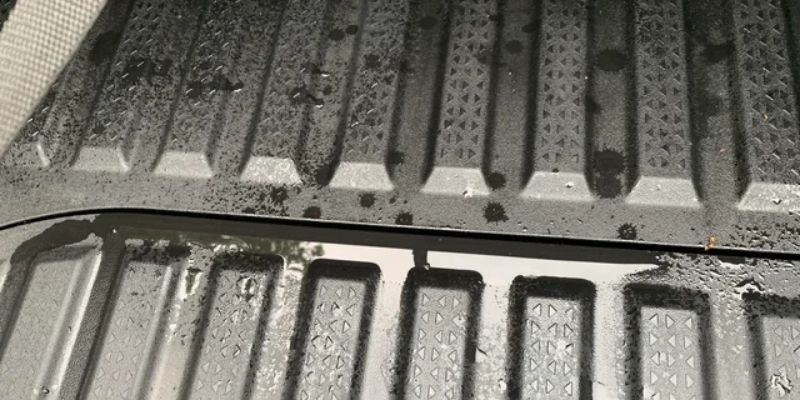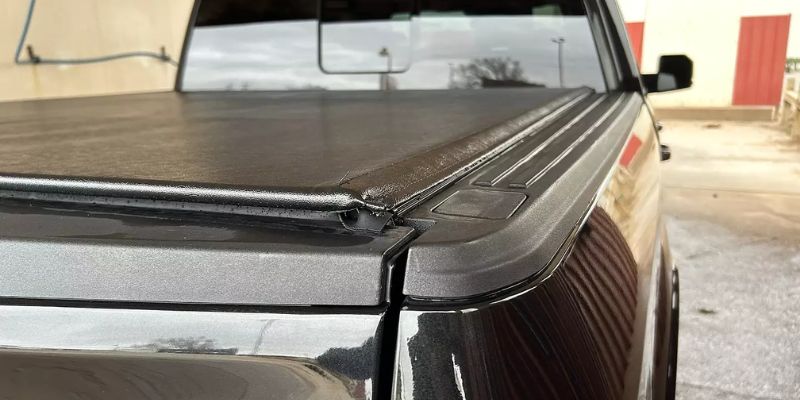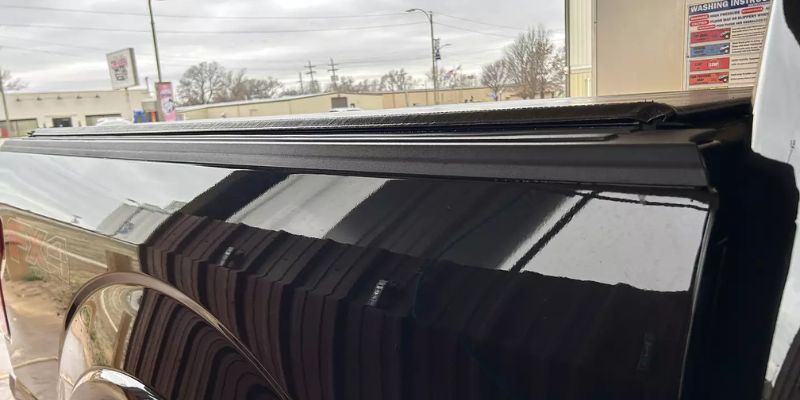The Gator SRX tonneau cover presents several critical performance issues that warrant thorough examination.
Reports indicate persistent water intrusion at the front corners, while installation complications plague many users attempting initial setup.
The tension management system often fails to maintain ideal cover position, leading to moisture accumulation and potential cargo damage.
These challenges, combined with material limitations and design constraints, raise significant questions about the product’s reliability in real-world applications.
Common Water Leakage Issues

While the Gator SRX cover provides substantial protection, water leakage issues have been documented, primarily affecting the front corner areas where inadequate sealing can result in water pooling.
The Gator SRX Tonneau’s folding mechanism and stitching patterns create potential entry points for moisture, compromising the cover’s water-resistant capabilities.
Testing reveals the tonneau cover achieves approximately 90% water tightness, with minor drips observed in the truck bed during adverse weather conditions.
Users can enhance performance by adjusting the cover’s tension to prevent sagging, which otherwise intensifies water accumulation and subsequent leakage.
While these issues affect the Gator SRX’s performance as a completely watertight solution, the water leakage remains minimal and manageable for most applications, requiring only minor adjustments and maintenance for peak functionality.
Installation and Fit Challenges
Most Gator SRX tonneau cover installations can be completed within 20 minutes, yet several important fit challenges persist across various truck models.
Users frequently encounter difficulties with clamp positioning, which affects overall alignment and security of the cover.
A significant installation concern centers on the ineffective foam plug designed for front gap sealing, which can compromise the cover’s waterproof capabilities.
The tailgate interface presents additional challenges, as proper positioning of the rubber flap against the tailgate’s interior is vital for ideal sealing.
Some users report having to adjust the cover position to achieve proper tailgate operation.
Precise tensioning during installation proves essential, as inadequate adjustment can lead to cover sagging under weather loads, potentially causing water pooling and subsequent leakage issues.
Tension and Sagging Concerns

Despite proper initial installation, Gator SRX tonneau covers commonly experience tension-related issues that manifest as sagging during adverse weather conditions.
When exposed to rain or snow, the cover’s insufficient tension leads to water pooling, which can compromise the cargo bed’s protection and potentially cause leakage.
The primary tension maintenance system, which relies on Velcro securing methods, often proves inadequate over time.
Users frequently need to readjust the cover’s tension to maintain peak performance.
The weather stripping components, particularly the foam plugs designed for gap sealing, demonstrate limited effectiveness.
Some owners have resorted to alternative solutions, such as black silicone applications, to enhance the cover’s fit and tension.
Additionally, the rubber flap’s positioning against the tailgate requires precise adjustment to prevent sagging and maintain proper functionality.
Weather Sealing Performance
How effectively the Gator SRX tonneau cover performs its weather sealing function remains a critical point of evaluation.
Testing indicates approximately 90% watertight performance, though real-world usage reveals notable vulnerabilities in the cover’s sealing effectiveness.
Primary weather sealing issues manifest at the front corners, where design limitations in the tarp’s folding and stitching create gaps prone to water accumulation.
The supplied foam plugs intended to address these vulnerabilities have proven inadequate, prompting users to seek alternative solutions like silicone sealants.
During heavy rainfall, significant leaks have been documented despite manufacturer claims.
While adjusting cover tension and utilizing Velcro attachments can improve sealing performance, these modifications represent necessary interventions rather than ideal out-of-box functionality, indicating potential design shortcomings in the cover’s weather protection capabilities.
Design and Material Limitations

The Gator SRX tonneau cover exhibits several inherent design and material constraints that impact its overall functionality.
The low-profile design, while aesthetically pleasing, creates structural vulnerabilities at the front corners where the cover’s folding and stitching patterns produce gaps in the seal and tarp assembly.
The material composition demonstrates limitations under environmental stress, with noticeable sagging occurring during heavy precipitation or snow loads.
This design flaw is compounded by an inadequate foam plug system intended to seal the front gap.
Additionally, the cover’s interface with the tailgate reveals engineering compromises that can restrict normal truck bed access.
These structural and material shortcomings suggest that cost-saving measures in the design phase have resulted in performance trade-offs that affect the cover’s practical utility.
FAQs
What Is the Difference Between Gator SRX and ETX?
The Gator SRX features manual tension control and superior water resistance compared to the ETX. Both tonneau covers are soft roll-up designs, but the SRX offers enhanced durability and broader availability beyond Amazon.
Is Gator a Good Brand of Tonneau Cover?
Despite mixed reviews, Gator consistently delivers reliable tonneau covers at competitive prices. Their straightforward installation process and minimal cover maintenance requirements make them a practical choice for truck owners seeking value-focused protection solutions.
How Long Should a Tonneau Cover Last?
A well-maintained tonneau cover typically lasts 5-10 years, depending on weather resistance, quality of installation, and environmental exposure. Premium models with superior materials and proper maintenance can extend service life beyond this range.
What Are the Disadvantages of a Tonneau Cover?
Tonneau covers present significant drawbacks including complex installation challenges, potential weather protection issues during heavy precipitation, and maintenance requirements. Some designs may compromise bed accessibility and require frequent tension adjustments for ideal performance.
Final Thoughts
The Gator SRX tonneau cover, like a shield with hairline fractures, exhibits systematic vulnerabilities that compromise its core functionality.
Critical deficiencies in corner sealing mechanics, tension maintenance systems, and water management capabilities necessitate thorough engineering modifications.
These structural and design limitations, particularly evident during adverse weather conditions, underscore the urgent need for enhanced sealing technology and reinforced material specifications to achieve ideal performance standards.
